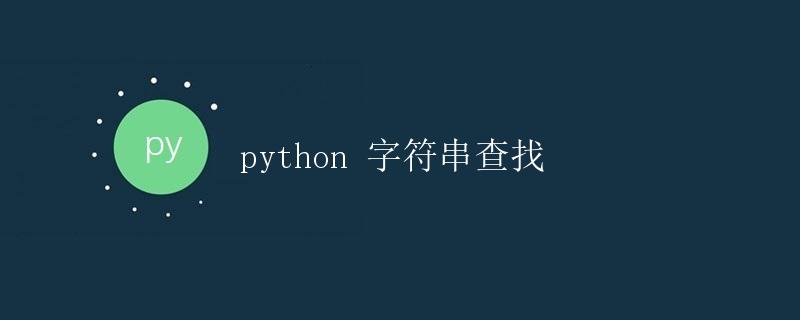Python 字符串查找

在Python中,字符串是一种非常常见的数据类型,我们经常需要对字符串进行查找操作。在本文中,我们将介绍如何在Python中进行字符串查找操作。
查找单个字符
我们可以使用index()方法来查找字符串中特定字符的位置。如果字符串中包含多个相同字符,该方法将返回第一个出现的位置。
# 定义一个字符串
string = "hello world"
# 查找字符'l'的位置
index = string.index('l')
print(index) # 输出结果为 2
查找子串
除了查找单个字符,我们还可以使用find()方法来查找子串在字符串中的位置。
# 定义一个字符串
string = "hello world"
# 查找子串'world'的位置
index = string.find('world')
print(index) # 输出结果为 6
判断子串是否在字符串中
除了查找子串的位置,我们还可以使用in关键字来判断子串是否在字符串中。
# 定义一个字符串
string = "hello world"
# 判断子串'world'是否在字符串中
if 'world' in string:
print("子串'world'在字符串中")
else:
print("子串'world'不在字符串中")
按索引查找字符
我们还可以通过索引来查找字符串中的字符。
# 定义一个字符串
string = "hello world"
# 查找索引为2的字符
char = string[2]
print(char) # 输出结果为 'l'
逆向查找
除了从头开始查找,我们还可以从尾部开始逆向查找字符串。
# 定义一个字符串
string = "hello world"
# 逆向查找字符'l'的位置
index = string.rindex('l')
print(index) # 输出结果为 9
查找所有匹配项的位置
如果我们需要查找字符串中所有匹配项的位置,可以使用循环和切片的方法来实现。
# 定义一个字符串
string = "hello world, hello python, hello java"
# 查找所有匹配项'hello'的位置
index = -1
while True:
index = string.find('hello', index + 1)
if index == -1:
break
print(index)
忽略大小写查找
有时候我们需要忽略字符串的大小写进行查找,这时可以使用lower()方法转换字符串为小写后进行查找。
# 定义一个字符串
string = "Hello World"
# 忽略大小写查找字符'l'的位置
index = string.lower().index('l')
print(index) # 输出结果为 2
结语
通过本文的介绍,我们学习了如何在Python中进行字符串查找操作。字符串查找是在日常编程中非常常见的操作,掌握好字符串查找的方法对我们处理字符串相关的任务非常有帮助。
 极客教程
极客教程